L-Tetramino
You are sitting and staring at the ground and notice the square tiles placed in a matrix.
So you wonder whether you can fill them up with L-Tetraminos (picture of them below)
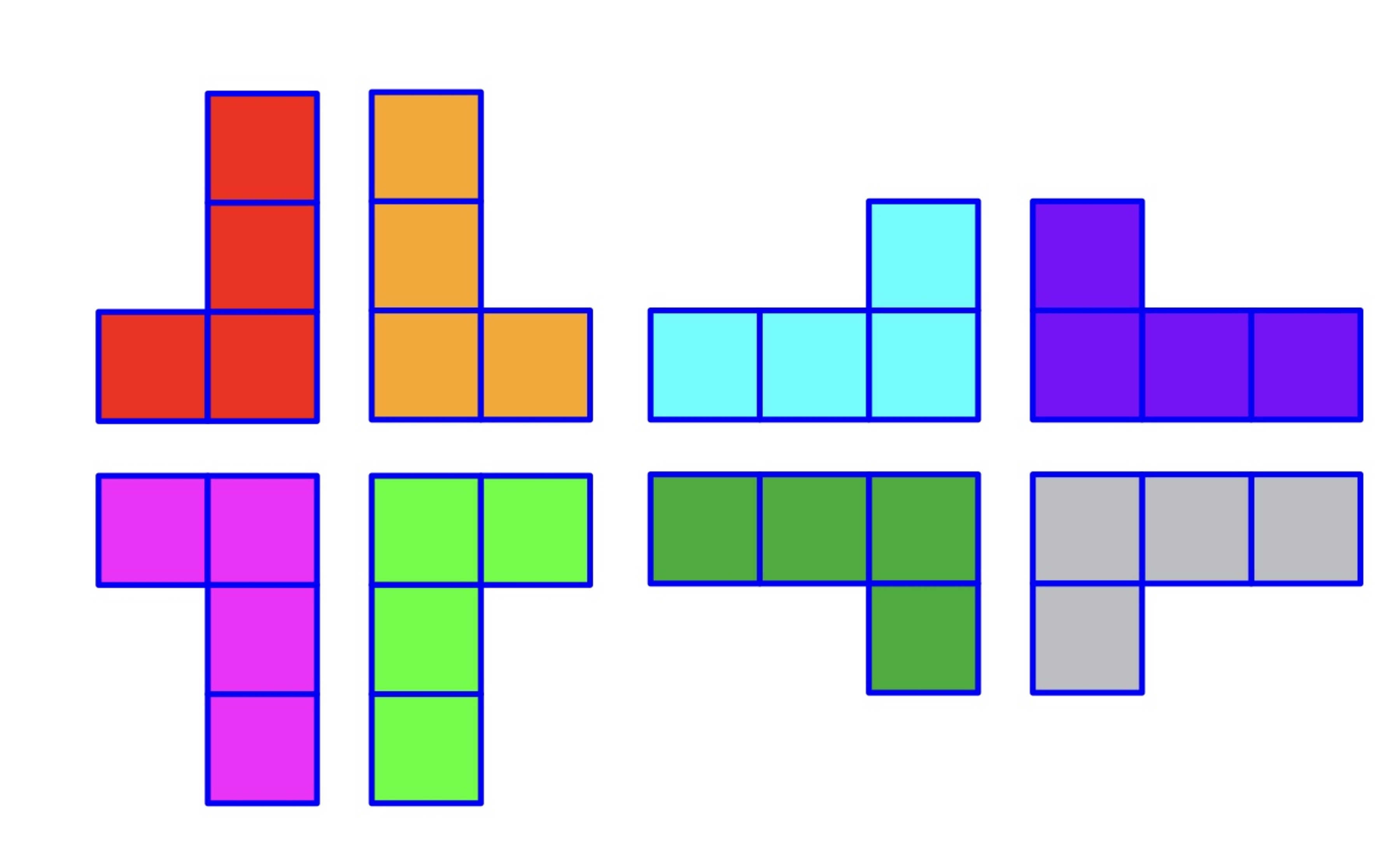
You know after filling in as much as possible there will be one hole left, so you wonder where you can place that hole.
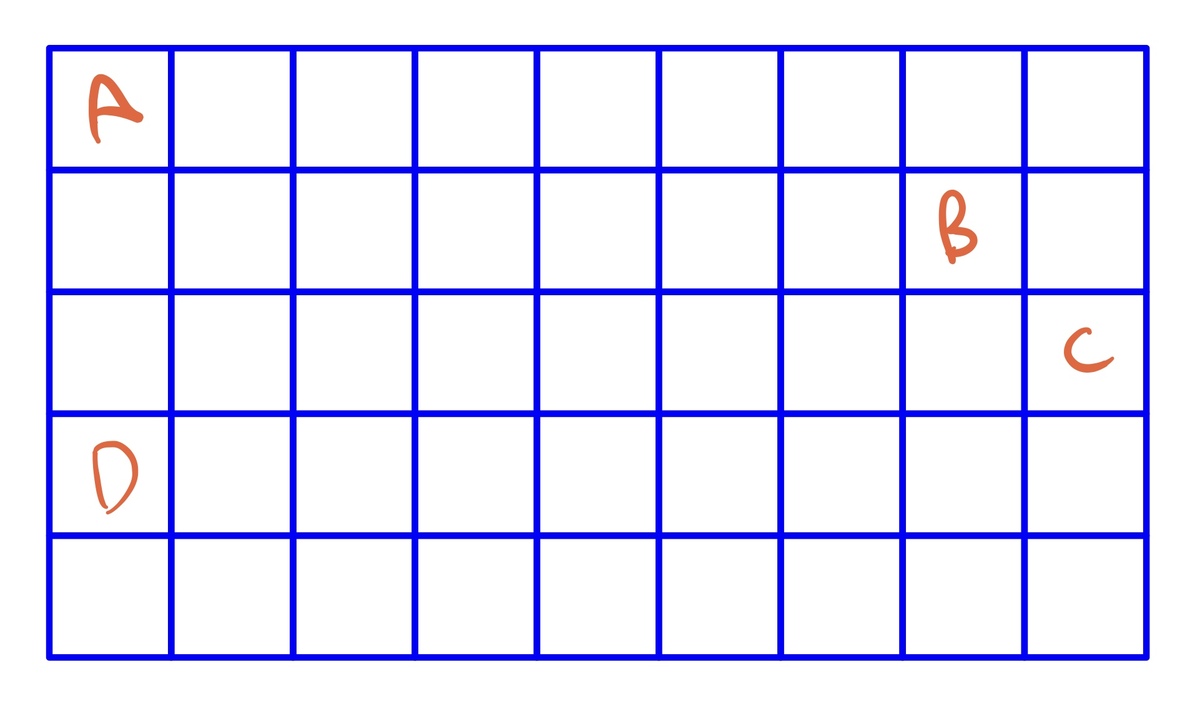
Out of the given options, in only one place can the hole be placed, which is it
Of a matrix filled with one corner empty
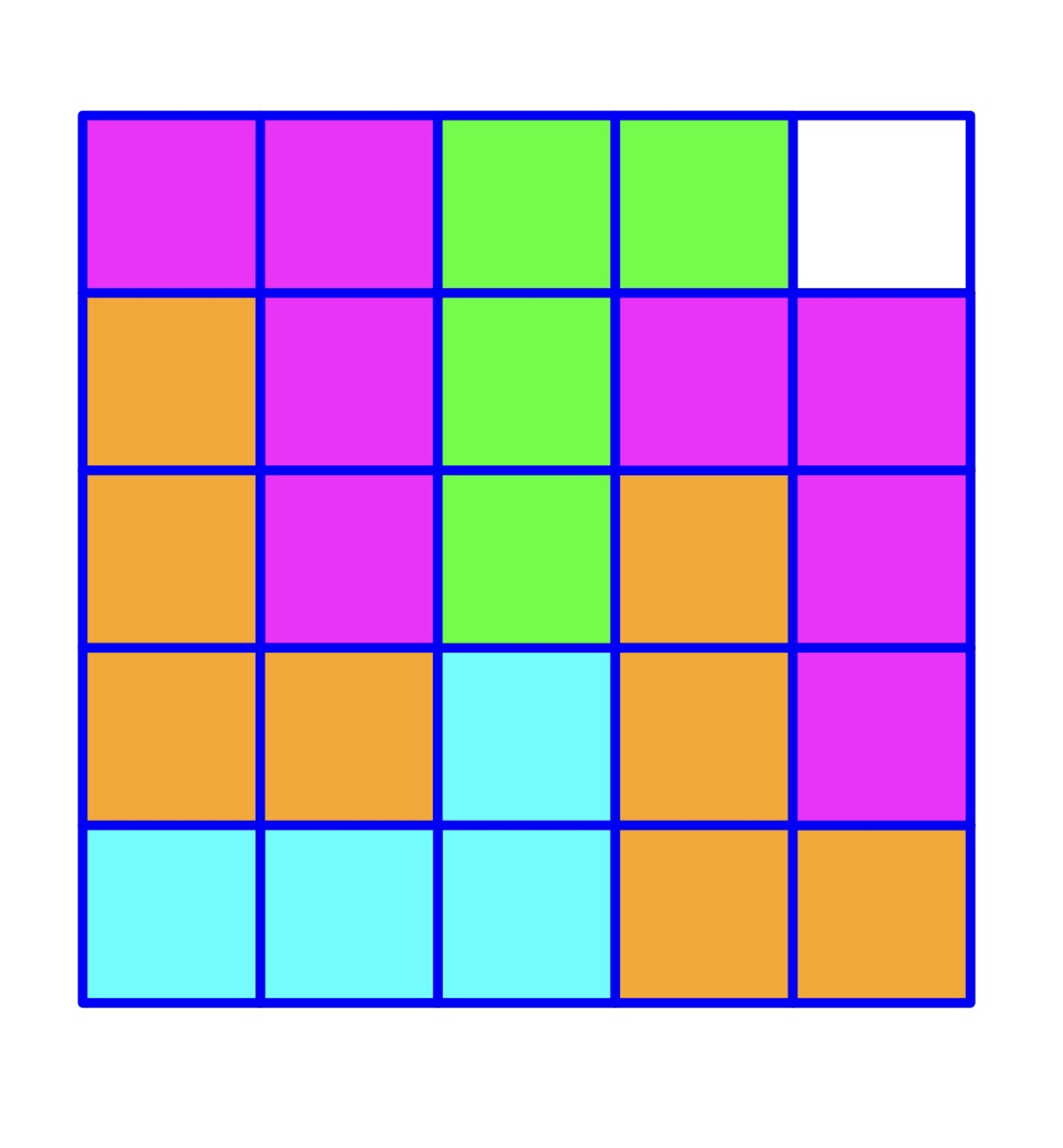
This section requires Javascript.
You are seeing this because something didn't load right. We suggest you, (a) try
refreshing the page, (b) enabling javascript if it is disabled on your browser and,
finally, (c)
loading the
non-javascript version of this page
. We're sorry about the hassle.
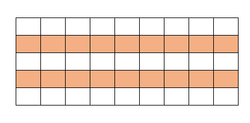
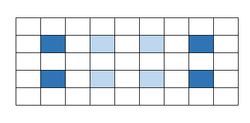
Color every other column white and gray so that there are 2 0 gray squares and 2 5 white squares:
Then there are two types of L-Tetraminos that can be placed on the board - one that covers 1 white square and 3 gray squares, and one that covers 3 white squares and 1 gray square:
Let x be the number of L-Tetraminos that cover 1 white square and 3 gray squares, and let y be the number of L-Tetraminos that cover 3 white squares and 1 gray square.
Since each L-Tetramino covers 4 squares, and since there are 4 5 squares and 1 hole, there are 4 4 5 − 1 = 1 1 total L-Tetraminos, so x + y = 1 1 .
Assume that the hole is on a white square, so that all 2 0 gray squares are covered. Then 3 x + y = 2 0 . However, x + y = 1 1 and 3 x + y = 2 0 leads to ( x , y ) = ( 2 9 , 2 1 3 ) , a non-integer solution, which is not possible. Therefore, the hole must be on a gray square.
Out of the given choices, only B is on a gray square, so that is where the hole should be placed.
Here is one possible way to do this: